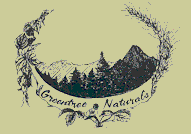 |
 |
 |
 |
 |
 |
 |
 |
 |
 |
|
Greentree Naturals CSA Newsletter - October 5, 2011Fresh from the Garden NewsWith autumn in full glory, the end of the harvest season is upon us. Most of our crops have been harvested for the last time and we are preparing our fields for fall cover crops and getting ready to plant garlic. We will spend the next few weeks doing garden clean up, which takes a considerable amount of time to accomplish with a two acre garden. The more we do in the fall, the less places for insects to hide out and overwinter. Our compost pile gets pretty big at the end of the season, as we clean out the chicken and goat pins to mix in with the garden fodder and let it do its composting over the winter months. There are times in the middle of winter, even covered with snow that the compost pile will be steaming which means it is working to break down even during the coldest part of the winter. Planting the garlic is a lengthy process that begins by “popping” the bulbs, which means separating the cloves from the bulbs to ready for putting them in the ground. We plant about 60 pounds of garlic every year, which will yield about 300-350 pounds of bulbs next summer when we harvest. There is no doubt that the garlic that we grow in this part of the country is some of the finest around. Our cool nights and cold winters are perfect for growing great garlic. This winter, I am going to make a DVD on “How to grow great Garlic” by putting together many photos that I have taken of the process from start to finish over the years. The last farmers market of the season is Saturday, October 15th. As always, as soon as the marketing season is over, I switch hats and move into a totally different environment. This is my 15th year serving on the Idaho Organic Advisory Council for the state Dept of Ag. I am driving down to Boise the first week after market for a meeting there, then head back for a two day training for an on-line course I am developing for UI in Moscow, teach an evening workshop on vegetable production, and meet with the College of Ag as a representative for small acreage growers for the state. It will be a whirlwind trip. Now that we have high speed, this winter will provide opportunities for developing on-line education projects from the comfort of home, which makes me very happy! It has been an absolute pleasure coordinating your CSA over the last 16 weeks. I hope you and your families have enjoyed the fresh veggies, exposure to ethnic crops & participation in the local food movement. While participation in any CSA, by design, helps support local farmers, your participation in Greentree Naturals CSA helps keep our farm alive. Your food dollar supports not only a food system that is healthy and sustainable, but also supports the efforts for us to mentor with the next generation of farmers. It is our sincere wish that you eat healthy and use the handouts I gave you in last weeks CSA to make savvy choices for what you eat this winter. One of my students started up Six Rivers Market two years ago, and while we are not members, I think it is a good program for finding local food in the winter. Simon Ronniger has taken over his fathers potato farm and will be selling assorted root crops (carrots, beets, potatoes, parsnips) all winter through Six Rivers market or if you want quantity for storage, you can call him and make arrangements. Just tell him Greentree Naturals sent you! Simon Ronniger #: 208-267-1477 Have a healthy winter and thank you for your continued support! ~Diane & Thom What’s In The Bag…
RecipesGreen Cabbage Relish
Dissolve sugar in water. Mix with vinegar, salt, and celery seeds. Our over the cabbage and pepper, mixing thoroughly. Cover and marinate for 3-4 hours. It will keep refrigerated 3-4 days. (Makes 8 cups) Variations:
Steamed Cabbage and Potatoes
Wash cabbage, core, and chop or slice into 1/2—1 inch pieces. Thickly slice the potatoes. Heat the olive oil in a large saucepan; add the onions and garlic; cook until onions are translucent. Add the cabbage and potatoes, then season with salt and pepper. Cover, and steam over low heat for 20-30 minutes or until the potatoes are tender. Stir frequently; if the vegetables start to brown, add some broth or water. (Serves 4) Variations:
Winter Eating: Fresh vs. Frozen Vegetables Nutrition ThoughtsAs winter approaches, fresh produce is limited, which forces us to turn to canned or frozen options. While canned vegetables tend to lose a lot of nutrients during the preservation process (notable exceptions include tomatoes and pumpkin), frozen vegetables may be even more healthful than some of the fresh produce sold in supermarkets. Why? Fruits and vegetables chosen for freezing tend to be processed at their peak ripeness, a time when—as a general rule– they are most nutrient packed. On the other hand, fruits & vegetables destined to be shipped to fresh-produce aisles are typically picked before they are ripe, which gives them less time to develop vitamins and minerals. And in the end, it's not the years in your life that count. It's the life in your years.
|
2003 Rapid Lightning Road, Sandpoint, Idaho 83864 • 208-263-8957 • info@greentreenaturals.com
Site Design by Logical Expressions, Inc.

